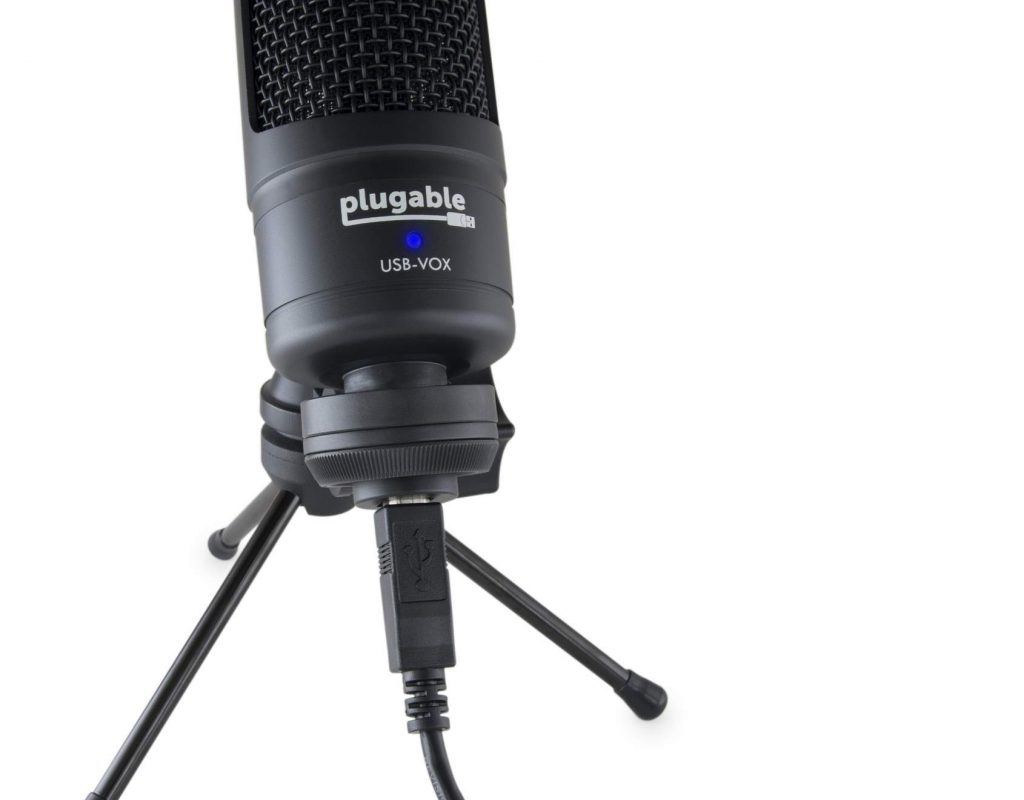My evaluation of the ≈US$75 USB-VOX studio microphone from Plugable involved several happy surprises, beyond its high quality sound for voice. Before its arrival, I knew that it’s a condenser type mic with a cardioid pickup pattern, and that it’s USB-only (which is great for some situations, not for all); that it came with its own table stand, and is also compatible with professional boom arms like my Heil PL2T. However, I had no idea that it would excel in several other aspects, despite one missing feature for some users.
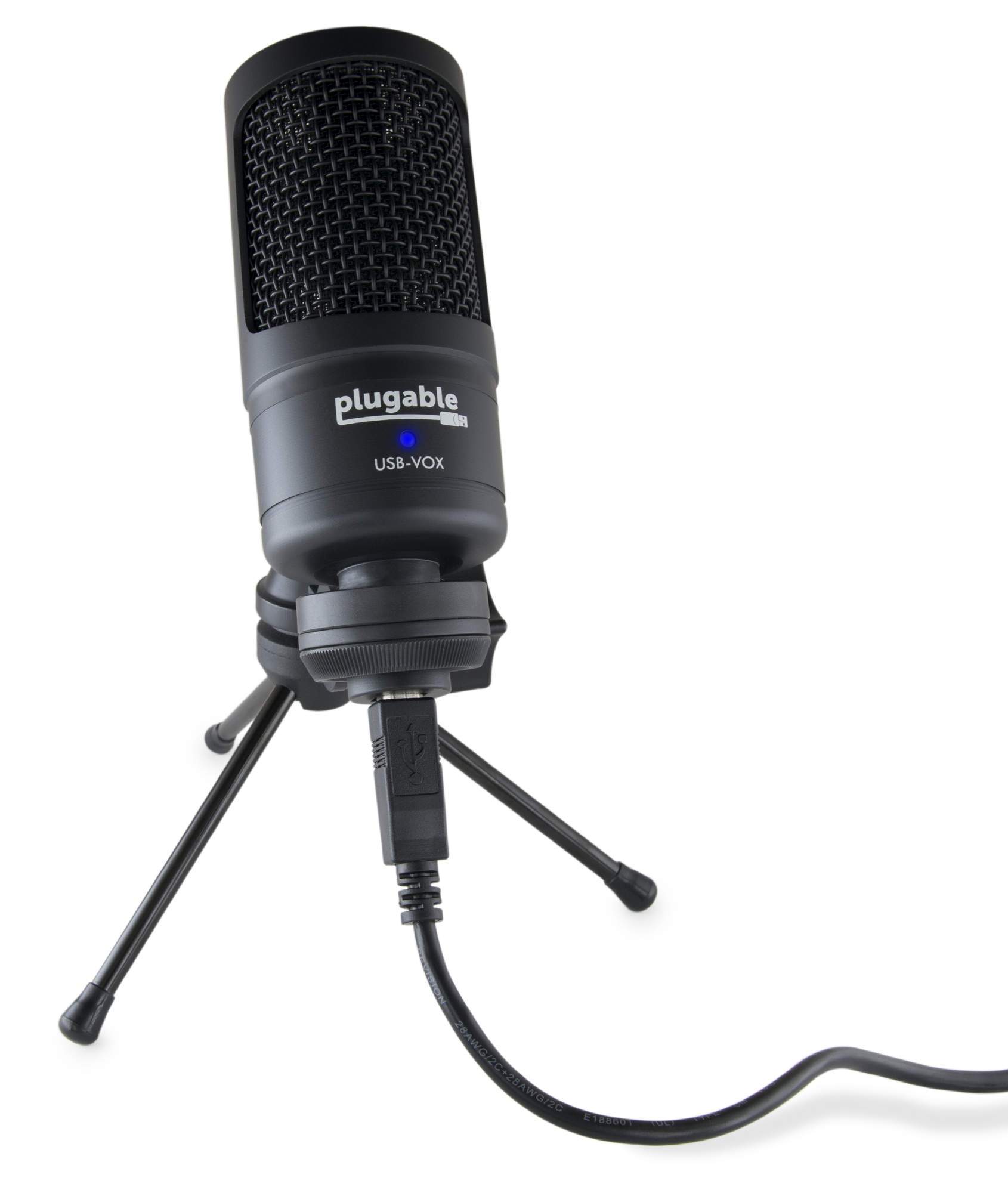
Published specs, with my comments
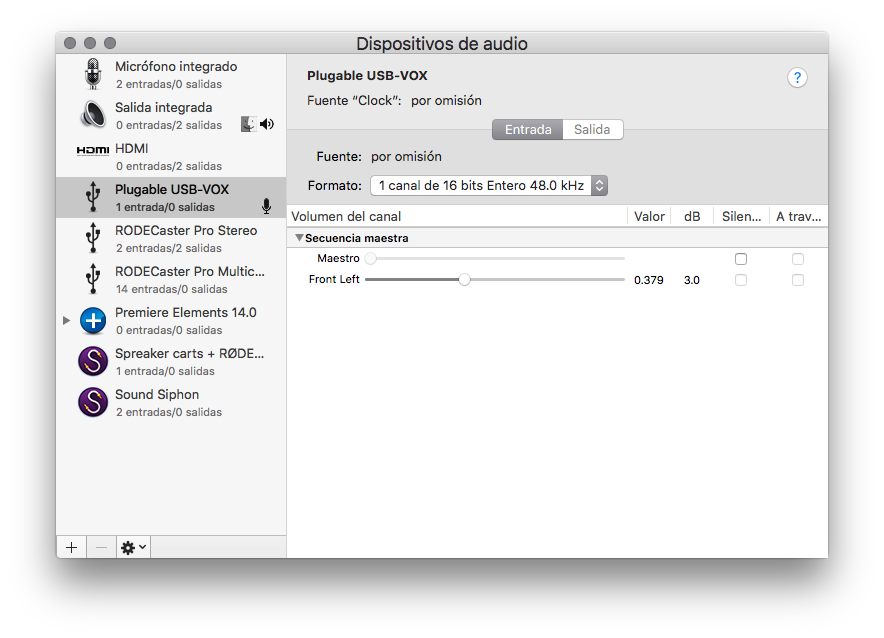
The manufacturer (Plugable) really understates the ≈US$75 USB-VOX microphone (Amazon link), by publishing that it only offers 44.1 kHz audio sampling frequency. In reality, the USB-VOX microphone is much better than that, since I discovered it also offers 48 kHz audio sampling too, as shown in the above screen shot. For those who haven’t yet read my recent article 48 kHz: How to set it in Android, iOS, macOS and Windows, the Audio MIDI Setup in macOS is the place to discover a device’s capabilities and change among them on a Mac. (That article also covers how to do it with other platforms.) That setting in the Audio MIDI Setup commands the A-to-D (analog-to-digital) converter in the external USB microphone or interface to change to 48 kHz mode. The Audio MIDI Setup would not show the option of the 48 kHz option if the connected hardware didn’t offer it.
48 kHz audio sampling is essential to be used in the video world, and based upon my recommendations in the 48 kHz Alliance, in the audio world too, for reasons that go beyond the quality difference. That’s why I am so glad I agreed to review the USB-VOX, despite the incomplete information on the Plugable website about this microphone (at least at publication time of this article).
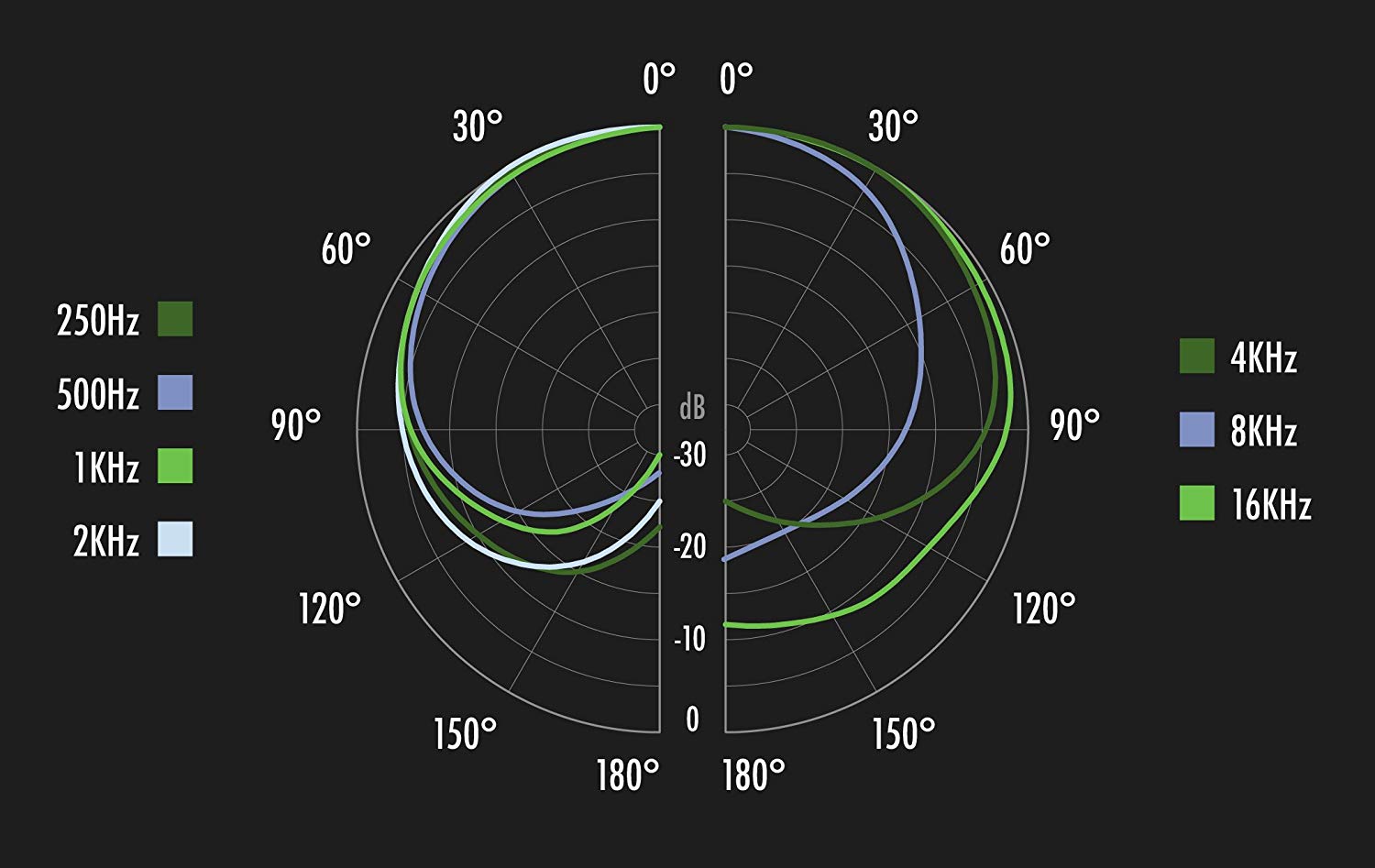
Above, the published pickup pattern.
Here are the rest of the official specs:
- Element: Polarized Condenser
- Polar Pattern: Cardioid
- Chipset: C-Media CM6400
- Frequency Response: 20 – 16000 Hz
- Bit Depth: 16 bit (confirmed by me)
- Sample Rate: 44.1 kHz (and 48 kHz, added by me)
- Power Requirement: USB (5V DC)
- Weight: 258 Grams
- Overall Body Dimensions: 140 mm long | 52.0 mm body diameter
- Connector Type: USB…
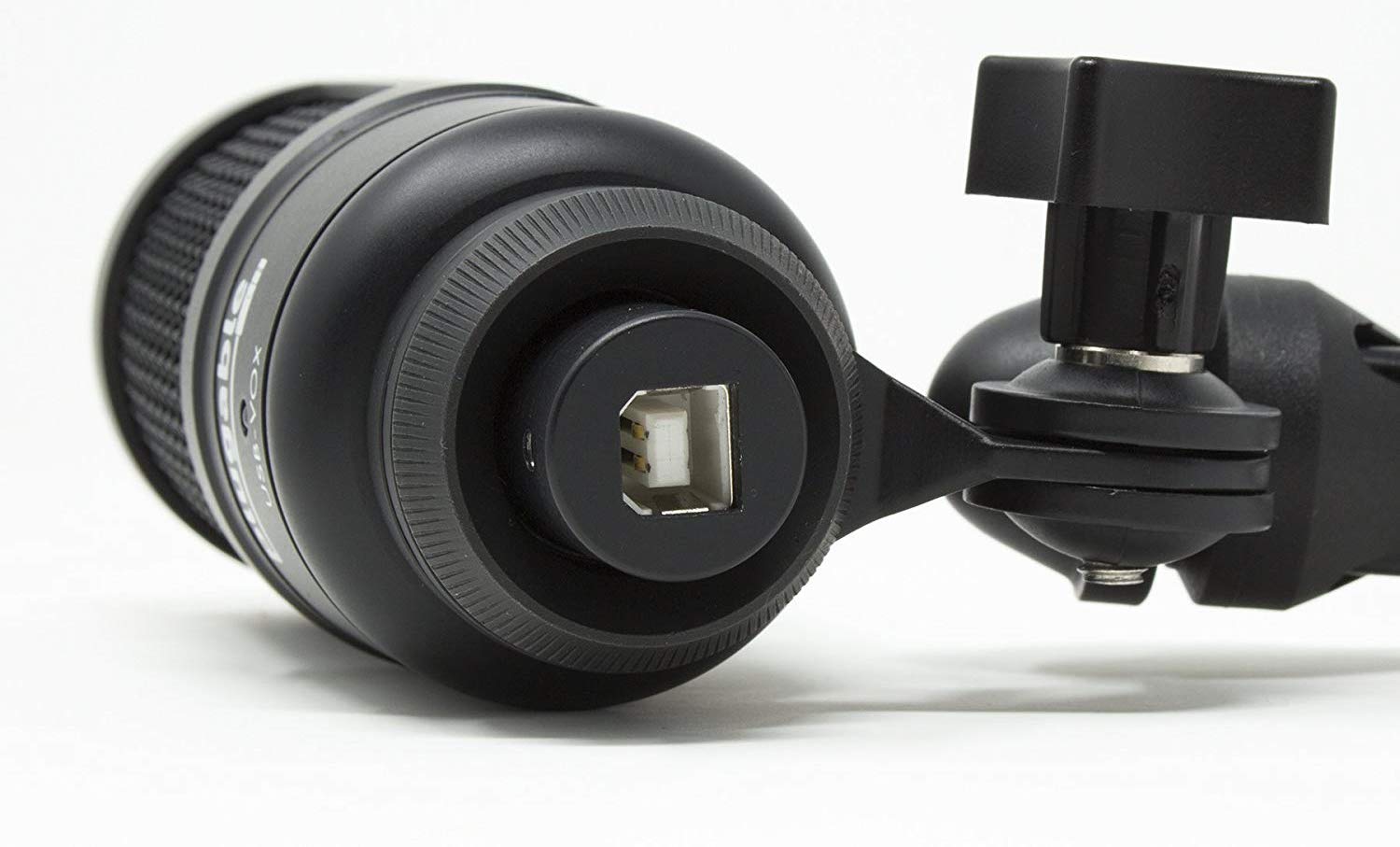
I’ll add the USB details: The microphone has an onboard USB-B connector (the type often found on printers), and includes a long 305 cm cable that goes from USB-B to USB-A, the most common one on most computers on the market. Th USB-A end can be adapted with an inexpensive adaptor to USB-C if required (which foreshadows other good news in the next section).
Compatibile platforms: another happy surprise
The manufacturer, Plugable, states that the USB-VOX works with Linux, macOS (where I did my published test recording) and Windows. To that list, I will add that I successfully used the USB-VOX with my current Android phone, which is a Google Pixel XL running the beta version of Android Q (aka Android 10), using the free Auphonic app for Android (my review here), and it worked perfectly well with 48 kHz audio sampling. (My latest iOS Auphonic review for iOS is here.) All I needed to connect it was the USB cable that came with the USB-VOX and the USB-C to USB-A female adapter that came with the Google Pixel XL phone. Your results may vary depending upon your particular phone/tablet model and operating system.
Included accessories
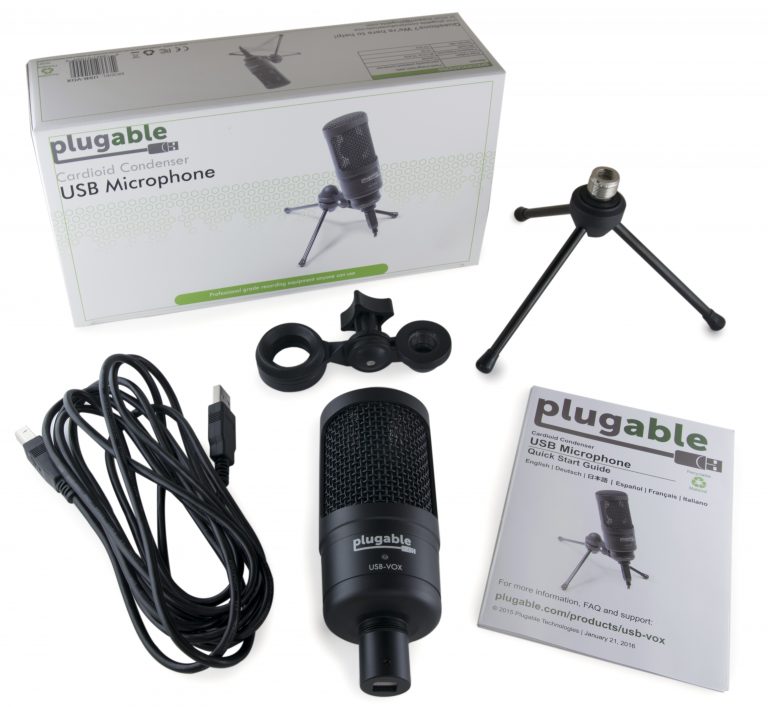
- USB-B to USB-A cable, 305 cm (described earlier)
- Mount with standard 5/8″ thread
- Adapter to reduce the 5/8” thread to 3/8” (which I have never needed to use so far, but is useful for some cases)
Sound test and more happy surprises
All below files uncompressed mono WAV file at 48 kHz/16-bit. Please listen with unmetered data. All were recorded and trimmed in mono 48 kHz to Hindenburg Journalist Pro, and normalized to -16 LUFS.
Audio PlayerAbove, USB-VOX unprocessed, other than normalization to -16 LUFS.
Audio Player
Above, after mild noise reduction from Hindenburg Journalist Pro.
Audio PlayerAbove, after mild noise reduction and dynamic compression (not file compression) from Hindenburg Journalist Pro.
I am extremely impressed at how good the recordings sound for about US$75, even the unprocessed one.
I am also impressed since I was able to use it without any plosives (popping) issue, without the need of any pop filter or windscreen. This is very unusual when using most cardioid mics up close, even when addressing them at a 45-degree angle. I am also impressed how low self-noise the Plugable USB-VOX (Amazon link) has (even before processing) and how well it rejected background rumble, especially considering that it’s a condenser microphone. It might sound crazy, but the isolation of this Plugable USB-VOX reminded me of the RØDE Broadcaster (which costs US$419, reviewed here, Amazon — B&H) and the Audio Technica AT875R (which costs US$169, reviewed here, Amazon — B&H), since they have been among the very few condenser type mics I have ever tested that isolate background rumble so well, when all of them are addressed very closely. In that sense, these exceptional microphones have the extra frequency response, clarity and high output level of a condenser type mic, while having the isolation advantage of a dynamic mic. This does not mean that the USB-VOX sounds the same as the others, but it does mean that it isolates as well (when used in equal proximity) and it does sound very good for its price.
However, sound quality and isolation are not the only issue when selecting a microphone. There are other factors, as you’ll see ahead.
Advantages & disadvantages of a USB microphone
As I have clarified in other articles, USB microphones are really analog microphones with a built-in A-to-D or analog to digital converter. The advantage is simplicity to connect to a computer (or sometimes to a tablet or smartphone), especially when there is going to be a single microphone and the purchaser doesn’t already own a high-end interface (preamp + A-to-D converter), so no extra equipment must be purchased in order to connect it.
Multiple USB mics to a single computer?
Despite popular myths, it is indeed possible to connect multiple USB microphones to a single computer, using software that specifically allows for that, like Hindenburg Journalist Pro (see my many articles here), Sound Siphon (covered in these recent articles) or Audio Hijack. Some of these programs even allow recording multitrack from each USB mic, where each microphone is recorded on an independent track for maximum control in post production.
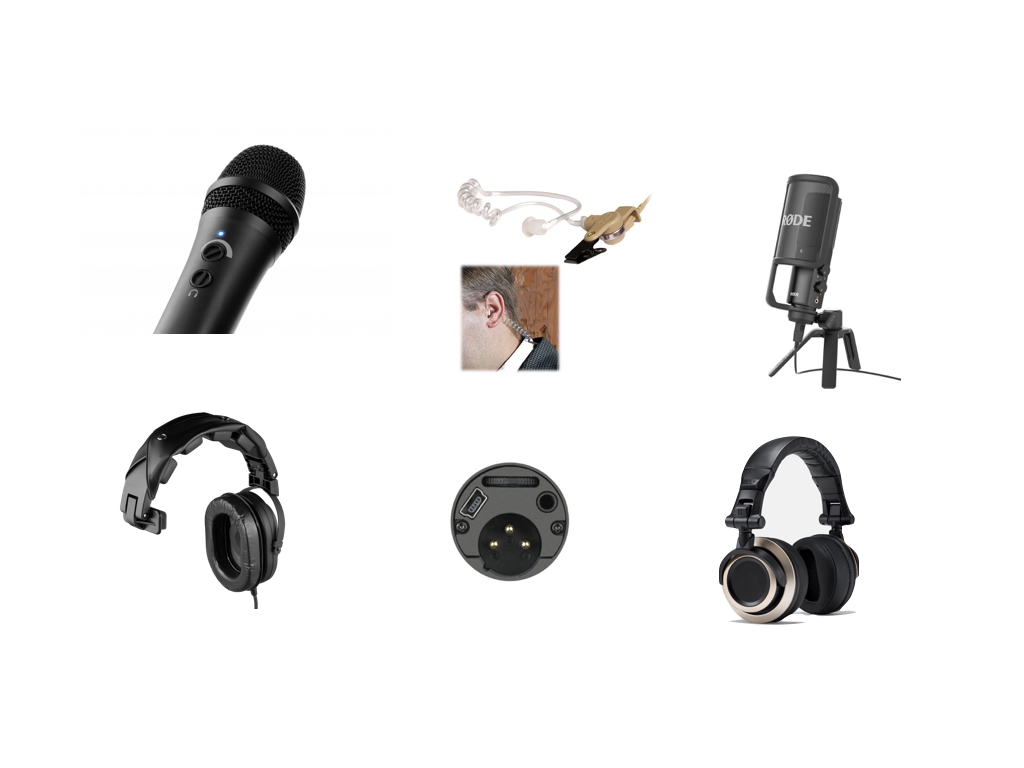
However, despite those possibilities, there are challenges —and solutions, as I covered in Monitoring challenges when using multiple digital USB mics simultaneously (illustrated above).
What can’t you do with a USB (only) microphone?
You can’t connect a USB (only) microphone to a conventional camcorder, HDSLR or mirrorless camera. You also can’t connect it to a conventional audio recorder, or audio/video recorder. But there are indeed situations where a USB microphone is best for the application, especially when there is a single microphone to connect to a computer (or phone or tablet).
Lack of onboard monitoring
Most radio announcers and voice talent I have met (but not all) prefer to monitor themselves “live” as they record or broadcast, to perform instant evaluation and quality control. For those who want that function, it should be direct and virtually latency free, since hearing ourselves with a slight delay and can be both distracting and fatiguing. One of the closest recommended USB mics in this price range that indeed includes onboard latency-free monitoring is the Samson Q2U (reviewed here, Amazon — B&H). The Q2U is different both because it’s a dynamic (not condenser type) and because it’s hybrid, with XLR in addition to USB. However, since the Q2U is so sensitive to plosives, I only recommend the Q2U together with the A81WS presidential windscreen, and that total price (≈US$93) goes higher than of that the ≈US$75 USB-VOX (Amazon link).
Of course, depending upon the project, you can record yourself and then immediately verify the playback. However, even if you don’t want to hear yourself live, you will still want to wear either isolating headphones or earbuds/IFB when dealing with other people remotely, to avoid feedback. That is feasible when using the USB-VOX microphone with conventional computers, although the 3.5 mm jack is gradually disappearing from many of the latest models of smartphones and tablets, so I hope Plugable will add latency-free monitoring to its next USB microphone model.
I’’ll discuss this more in the Recommended uses and Conclusions section, ahead.
Lack of 24-bit resolution
Although it is great to have 24-bit resolution audio (see my Understanding 24-bit vs 16-bit audio production & distribution), it is not a must and not really expected in a USB microphone at the ≈US$75 price point. It just means that it’s more important to set the ideal volume level as precisely as possible at the beginning, before starting the broadcast or recording.
Image credits
Some of the images in this article are courtesy of Plugable.
Recommended uses & Conclusions
The Plugable USB-VOX has a lot going for it for only ≈US$75 (Amazon link) when used quite closely, at a 45-degree angle: high voice quality, great background rumble isolation, pop resistance and 48 kHz sampling frequency. Its only critical missing feature (onboard latency-free monitoring) will be a dealbreaker for the portion of potential purchasers who demand it. As a result, my recommended uses for the USB-VOX are for those who don’t like hearing themselves “live” in these applications:
- Audiobook production
- Remote co-hosts and interviewees on online radio shows (including podcasts)
- Skype/Hangouts
- Webinar co-panelists
For most of those, they should use either isolating headphones or earbuds (plugged into the computer/smartphone/tablet that has a 3.5 mm output) to hear the other participants remotely, without feedback. The host or audio engineer can do the quality control for them and advise them, when required.
(Re-)Subscribe for upcoming articles, reviews, radio shows, books and seminars/webinars
Stand by for upcoming articles, reviews, and books. Sign up to my free mailing list by clicking here. If you previously subscribed to my bulletins and no longer receive them, you must re-subscribe due to new compliance to GDPR. Most of my current books are at books.AllanTepper.com, and my personal website is AllanTepper.com. Also visit radio.AllanTepper.com.
Si deseas suscribirte (o volver a suscribirte) a mi lista en castellano, visita aquí. Si prefieres, puedes suscribirte a ambas listas (castellano e inglés).
Suscribe to his BeyondPodcasting show at BeyondPodasting.com.
Subscribe to his Tu radio global show at Turadioglobal.com.
Subscribe to his Tu salud secreta show at TuSaludSecreta.com.
Subscribe to his award-winning CapicúaFM show at CapicúaFM.com.
FTC disclosure
No manufacturer is specifically paying Allan Tépper or TecnoTur LLC to write this article or the mentioned books. Some of the other manufacturers listed above have contracted Tépper and/or TecnoTur LLC to carry out consulting and/or translations/localizations/transcreations. Many of the manufacturers listed above have sent Allan Tépper review units, including Audio-Technica, Plugable , RØDE and Samson. So far, none of the manufacturers listed above is/are sponsors of the TecnoTur , BeyondPodcasting CapicúaFM or TuRadioGlobal programs, although they are welcome to do so, and some are, may be (or may have been) sponsors of ProVideo Coalition magazine. Some links to third parties listed in this article and/or on this web page may indirectly benefit TecnoTur LLC via affiliate programs. Allan Tépper’s opinions are his own. Allan Tépper is not liable for misuse or misunderstanding of information he shares.
Copyright and use of this article
The articles contained in the TecnoTur channel in ProVideo Coalitionmagazine are copyright Allan Tépper/TecnoTur LLC, except where otherwise attributed. Unauthorized use is prohibited without prior approval, except for short quotes which link back to this page, which are encouraged!

Filmtools
Filmmakers go-to destination for pre-production, production & post production equipment!
Shop Now